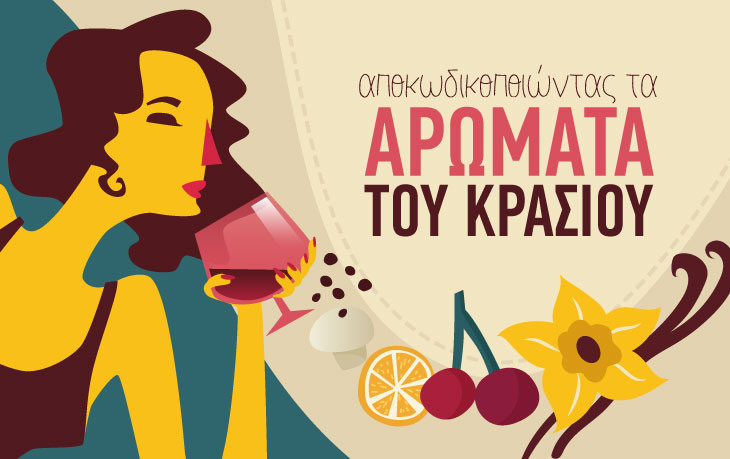DECODING THE AROMAS OF THE WINE

Hmm, this wine smells sour cherry, cherry, strawberry, gooseberry. There are some hints of tobacco, coffee and chocolate, too. And I'm asking you! How have all these been found in my wine? The sure thing is that winemakers do not put fruit, cocoa and spices to flavor their wine!
Below we will decode some of the basic aromas you can meet in your glass to know exactly how they were found there.
1. Tobacco
The most classic aroma of oaked wines comes from the contact of the barrel with the wine. But how? When the barrel is almost ready, it gets burned. A fire inside it helps to bend its boards to finally get tied.with this process it acquires its smoky aromas. The wooden barrels have various "burning" grades and thus smokiness. When the barrel is heavily smoked or new, it releases into the wine volatile phenols, which give the characteristic smoky aroma. This may include, in addition to smoke, nutty and toast notes (do they remind you of something?).
2. Banana
Yes, you have definitely smelled banana in some white or even red wines! The reason? One good reason is carbonic maceration that is mainly used in Beaujolais and gives these tropical aromas to wine (banana, pineapple). Another reason that a wine can smell like banana is because it was "infected" by an acetobacter during the fermentation. This means that it converts the alcohol into acetic acid (vinegar) and when it is mixed with 1-pentantol (a rather unpleasant form of alcohol) it produces amyl acetate that resembles the artificial flavor of banana.
3. Coconut
Yes, a wine might smell like coconut and responsible for this are lactones. Lactones are chemical compounds that are created in oaked wines and are mainly associated with American barrels.
4. Cooked fruits
This is a rather unpleasant feature. The aromas of cooked fruit show that a wine has been exposed to high temperatures or sunlight and thus has lost its freshness. This can also happen if the grape is exposed to a lot of sun and over ripens.
5. Clove
Cloves are the dried buds of a flower from Indonesia and are mainly used in cooking (pastitsada) and pastry (baklava). In many red wines that have been matured in oak barrel, the aromas of this sweet spice are quite intense. These notes are derived from the eugenol compound associated with the barrel and its degree of smoking. Interestingly, the same compound is contained in cloves, too!
6. Coffee
Coffee flavors can be formed during the aging of a wine in a barrel. Of course, there is no espresso in your wine. In fact, it's an organic chemical compound called furfuryl thiol. This compound relates to the "burning" of the barrel and gives coffee notes to your wine (whoa)!
Eva Markaki
Wine Geek


